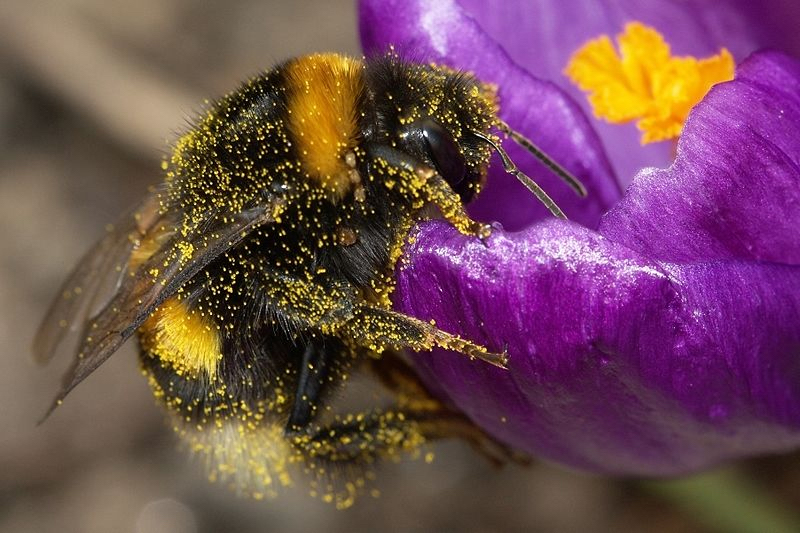Bees, A Book, and Risk
Melissa Reeser Poulin
 If I’d known what I was getting myself into, I’m not sure I would have done it.
If I’d known what I was getting myself into, I’m not sure I would have done it.
In the beginning, it was just anger and frustration driving me, keeping me up at night wondering what to do. Fifty-thousand bees were killed by insecticide in a parking lot, because customers were complaining about the honeydew aphid leaving trails on windshields. It was early summer 2013, all the linden flowers in bloom, every creature doing its work in the intricate warp and weft of life, including the drowsy bumblebee. Because the natural world is built on interdependence, you cannot kill one thing without harming another, without harming yourself.
It was seven years since the wider world had heard the first signs of trouble for pollinators, when beekeepers began reporting massive and inexplicable colony losses. A name for the crisis appeared—colony collapse disorder—and theories mushroomed. Conservationists pointed out that it wasn’t just the honeybee, industrious friend of agriculture, but native pollinators of all kinds that were showing ominous signs of decline.
Grief is a heavy, suffocating thing. When neonicotinoids killed those bumblebees, I needed something to do, maybe more than I needed to “do something.” Because really, I thought, what can a girl with degrees in literature and a little backyard garden actually do for pollinators? I wanted, in some way, to help close the gap between humans and the tiny creatures we too easily ignore or brush aside as mere nuisance—or worse, kill outright with no sense of consequence.
What resources did I have at my fingertips? I thought I’d make a book about the relationship between humans and pollinators. What started as an idea for a hand-sewn chapbook of my own poems, hand-sold to raise funds for conservation organizations, quickly became a much larger vision for a published collection of work from writers of all kinds. Suddenly, there was plenty to do.
I learned how to write a grant proposal and a book proposal, met with friends and friends of friends who taught me the basics of social media marketing and self-publishing, set up a website and established an LLC. I took out ads in literary magazines and opened a Submittable account to invite writers to send in work. As submissions began to come in, I found I needed another pair of eyes to help me, and joined with a local poet and beekeeper to co-edit and release the book that would eventually become Winged: New Writing on Bees.
Fast forward a year, through many kitchen table editing sessions, late nights of research, endless emails, event-planning, and sleeplessness. Somehow, there is a beautiful book in our hands, designed and printed locally with a cover illustration from a local artist. Inside, there is stunning work from a wide variety of writers, including two poet laureates. We’ve earned grant funding, held a writing workshop, and participated in an event with the honeybee research lab at Oregon State University. We’ve made our book available to school and county libraries, and in January we matched all copies sold with a copy donated to the Prison Book Program.
Yet the project has not been without its missteps and misunderstandings. I’ve had to turn down really good work, including work from friends whose writing I admire. We let errors get through our painstaking proofreading, which still feels terrible in spite of the beautiful erratum bookmark we printed to correct them. There were plenty of hurt feelings along the way, and many nights when I wondered if it would have been better to have just made that hand-sewn chapbook after all.
I’m not sure I will ever feel completely certain of the answer to that question, just as I was never completely certain, in beginning the project, if it was the right thing to do. I prayed a lot about it, and worried about my ability to see it through. Reading the book now, though, and reflecting on the 18-month journey (and counting) it has led me on, I am mostly grateful for the lessons I learned.
Anything worth doing will not be without pain and sacrifice (and let’s face it, whining). It will not be perfect. That’s the choice we make when we take a risk, when we move to create something that doesn’t yet exist in the world. I had no idea in June 2013 that that was the choice I was making, and being the fearful human being I am, I probably wouldn’t have made the book if I had known. It sounds funny, but I’m grateful for that ignorance. It allowed me to make Winged, and I’m so glad I did.